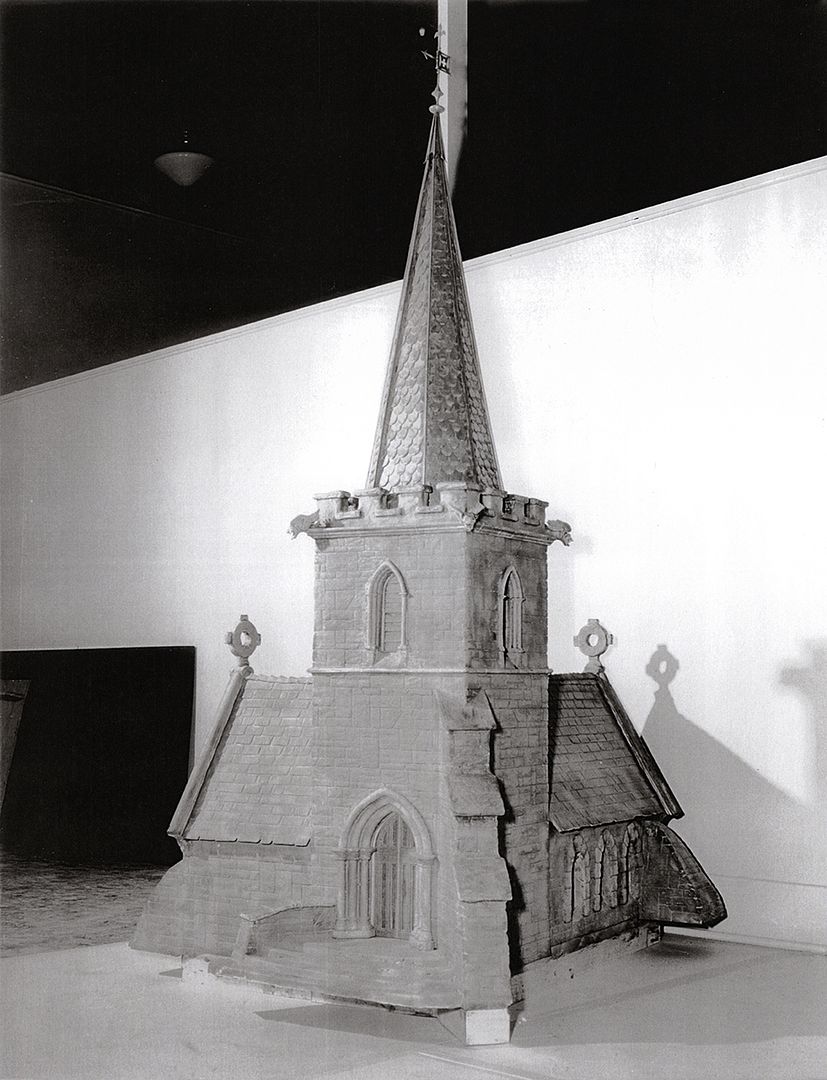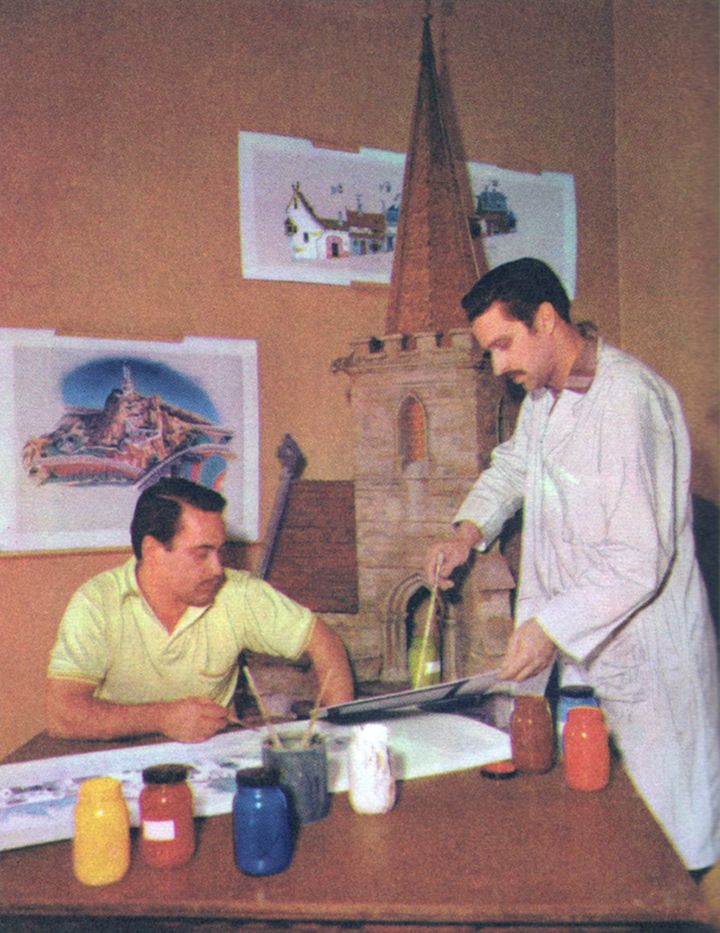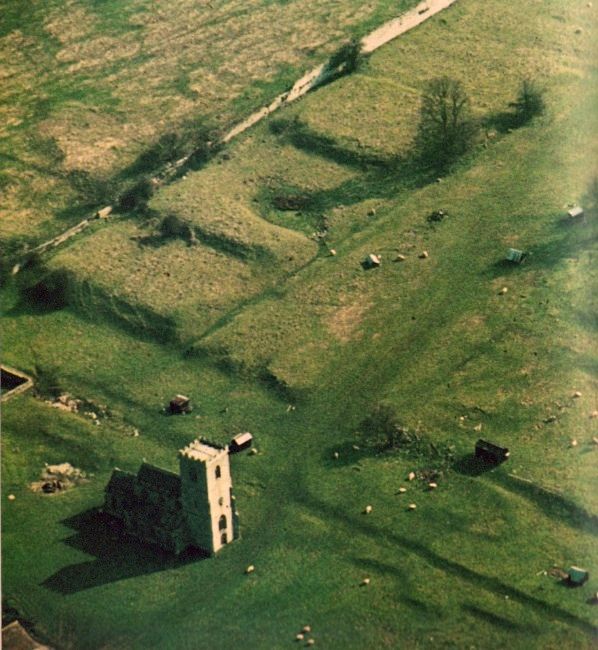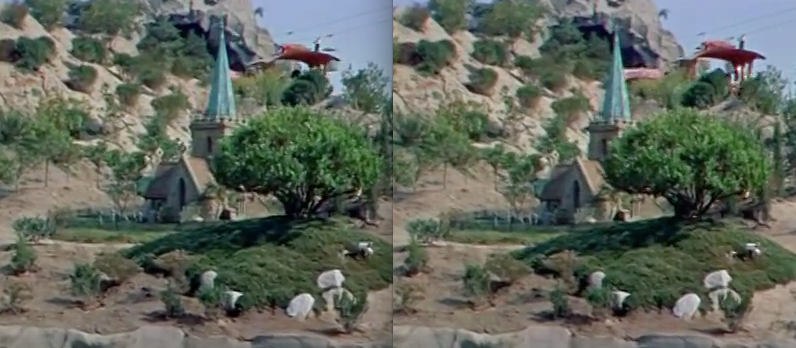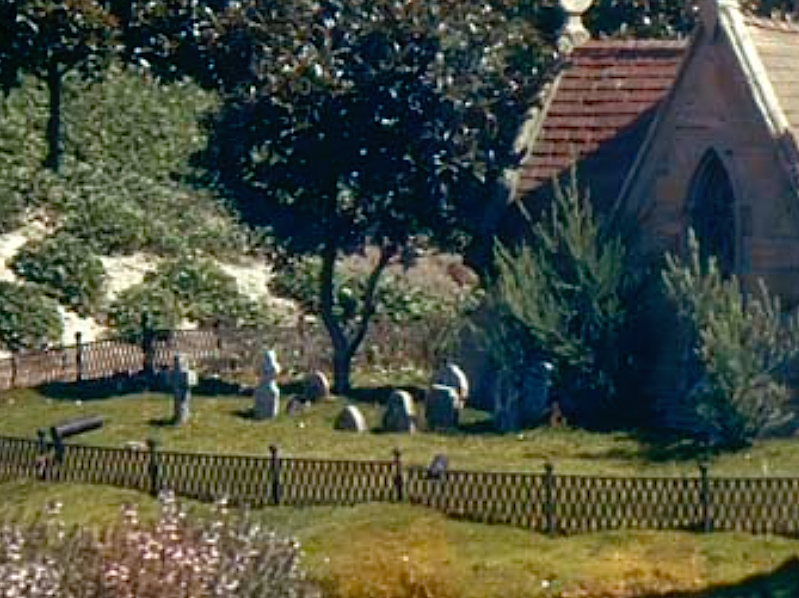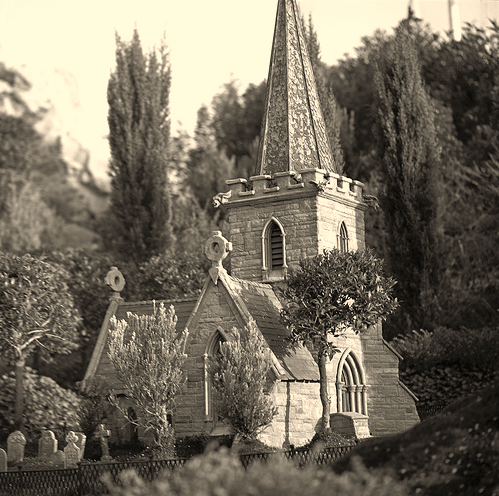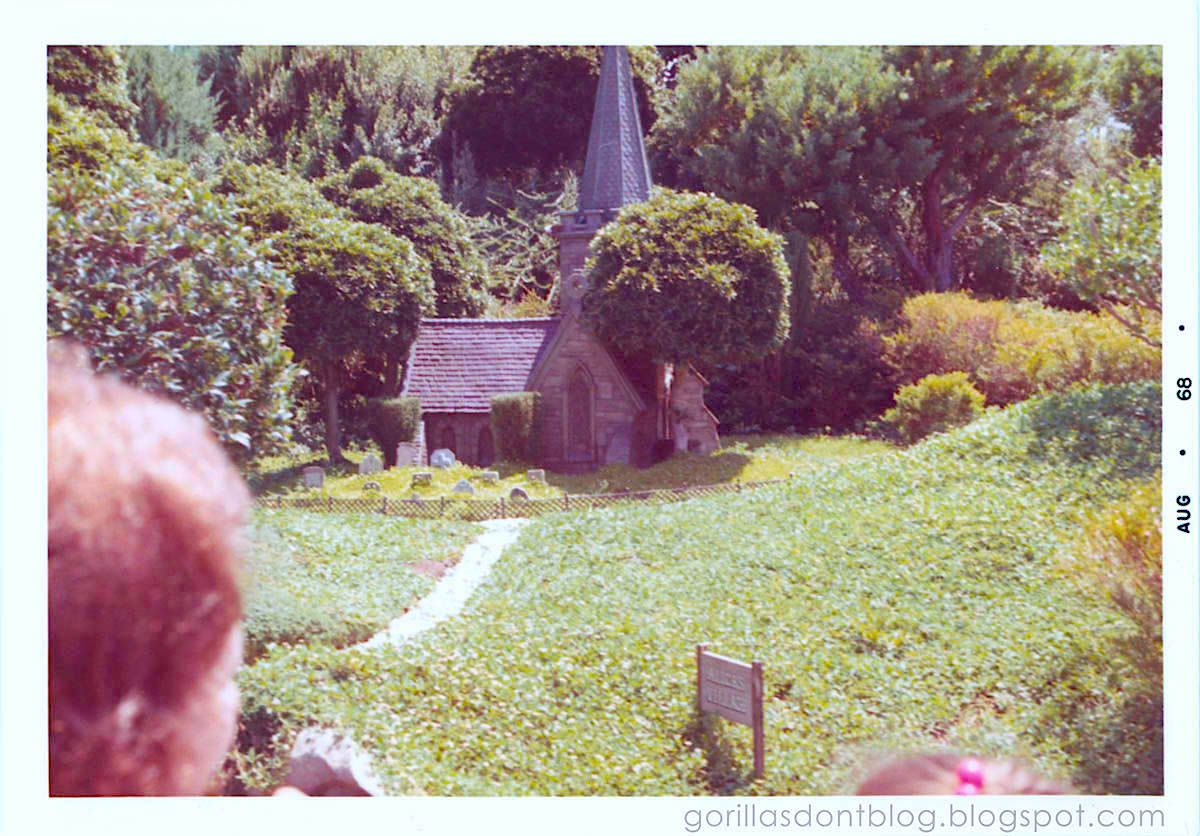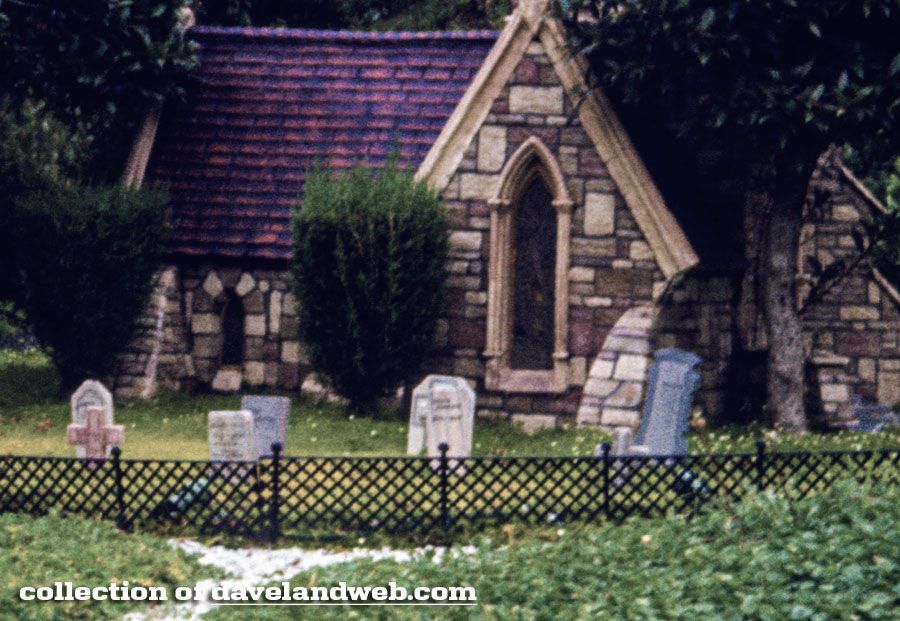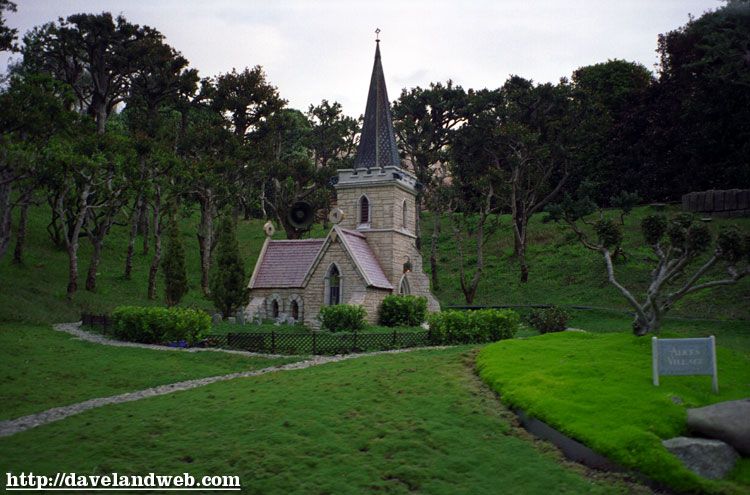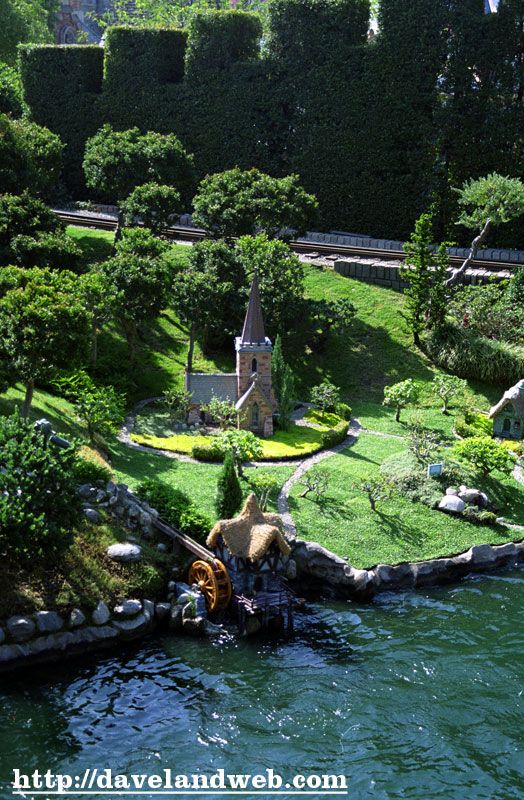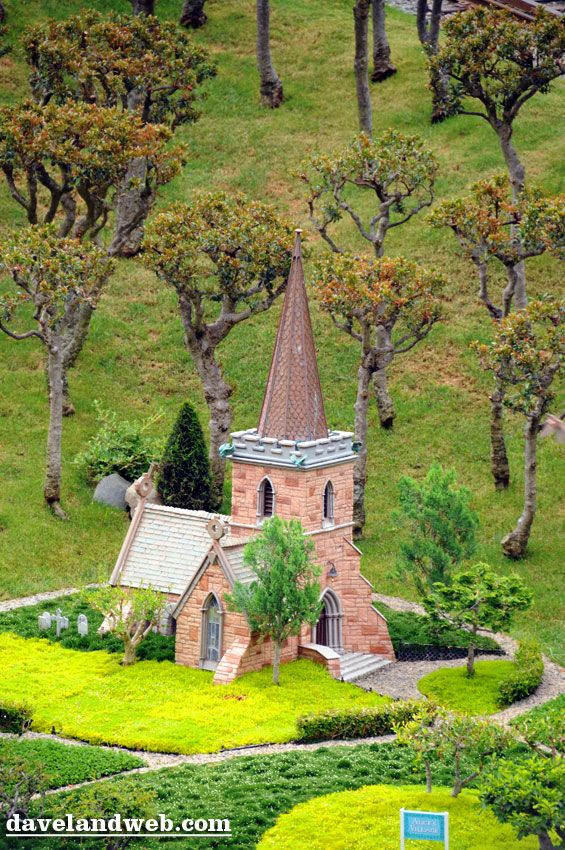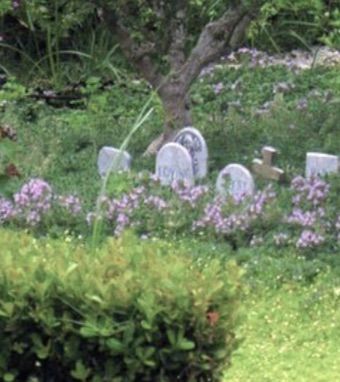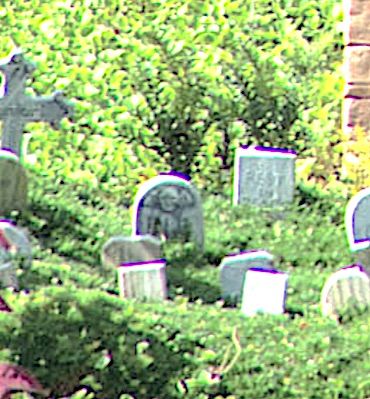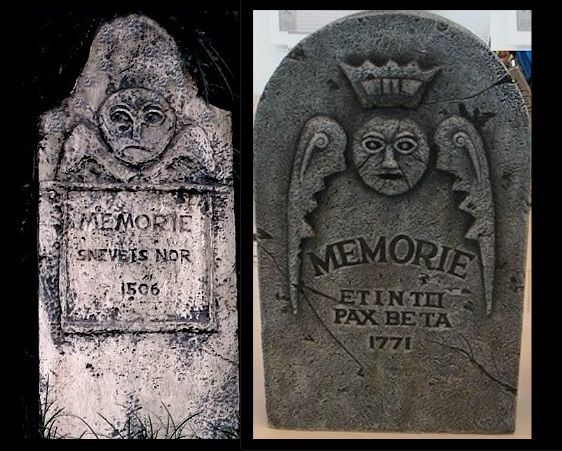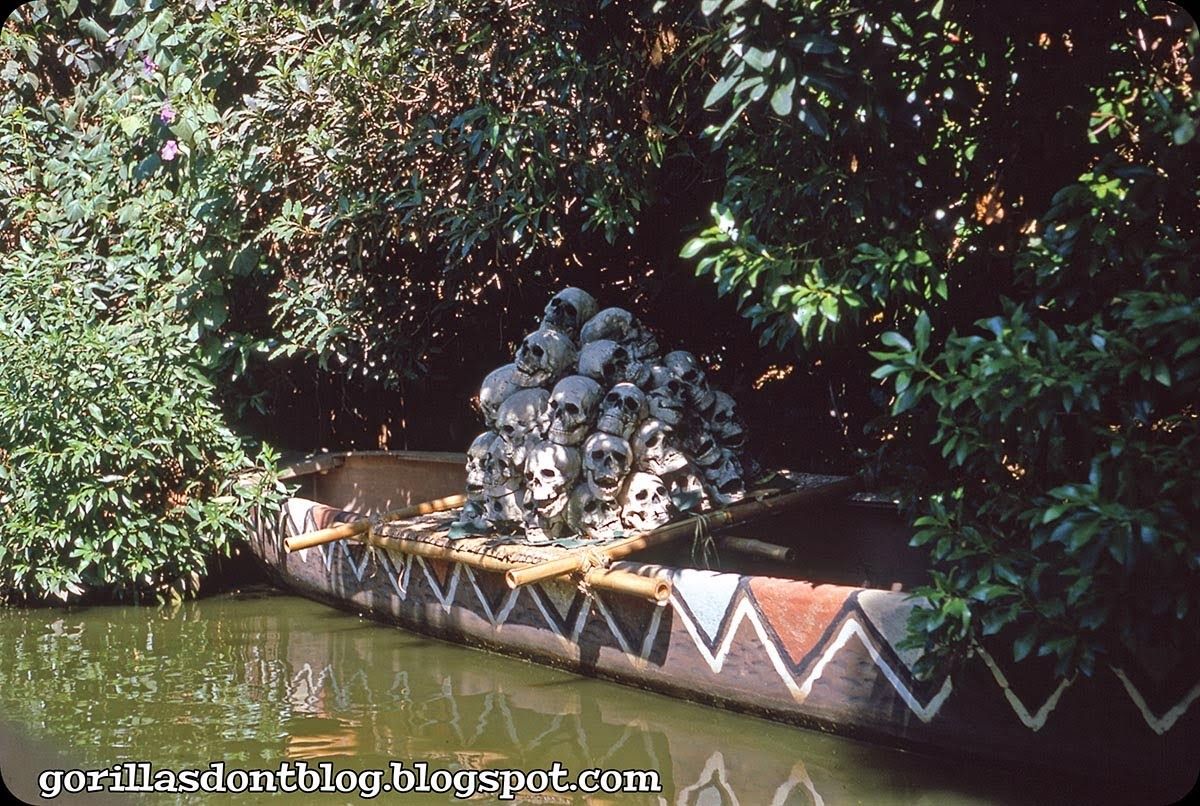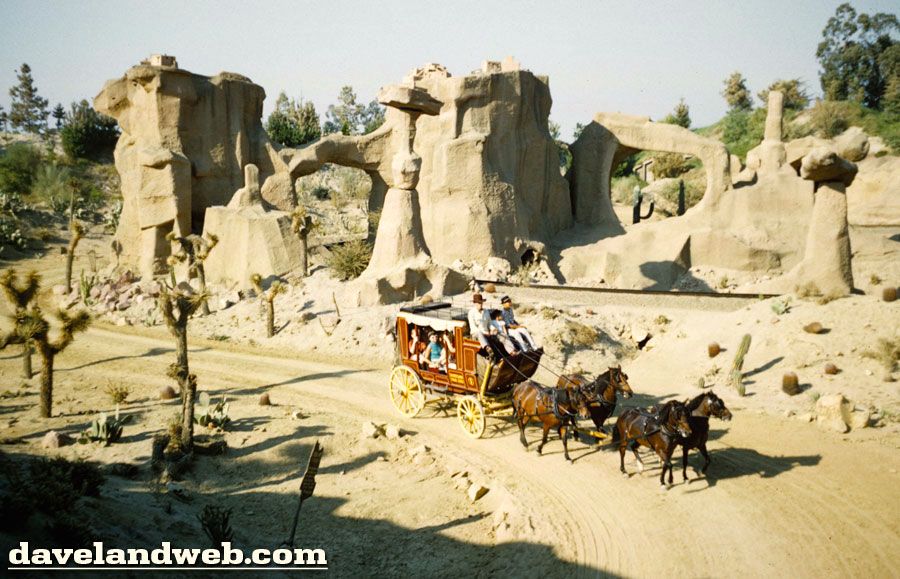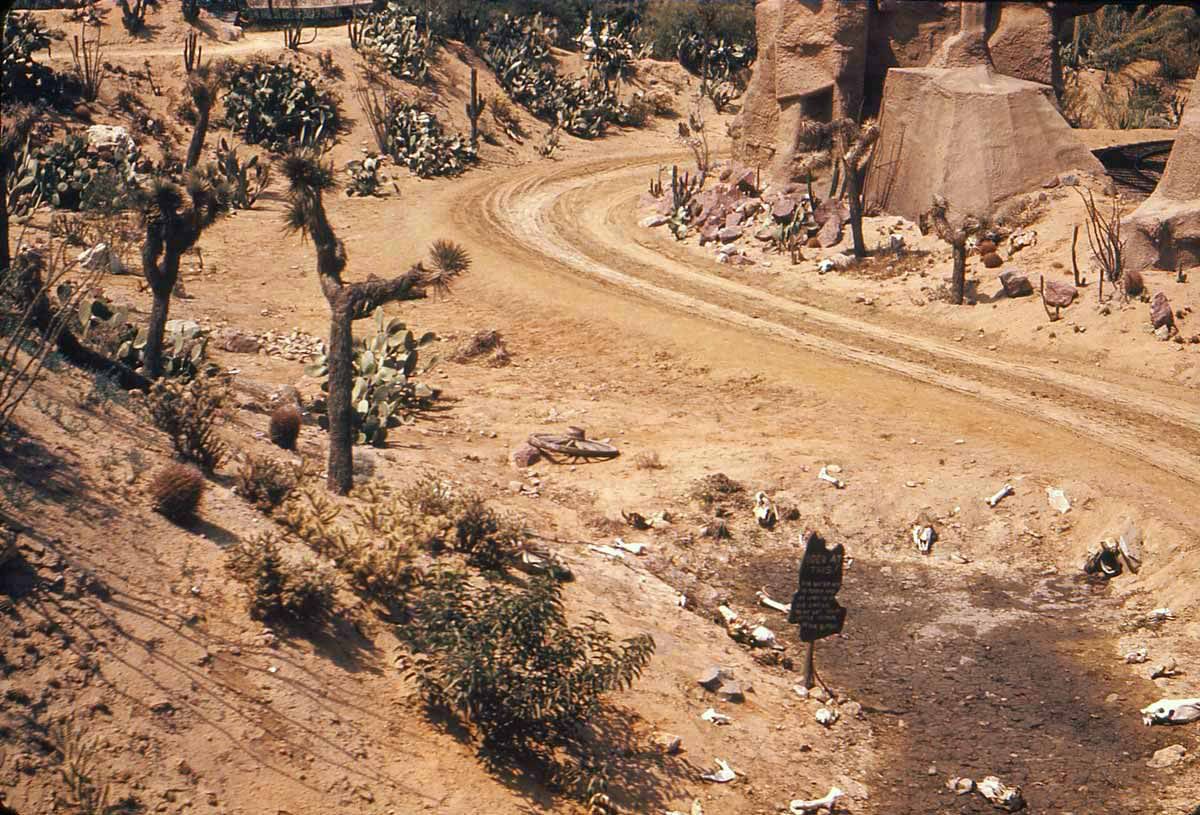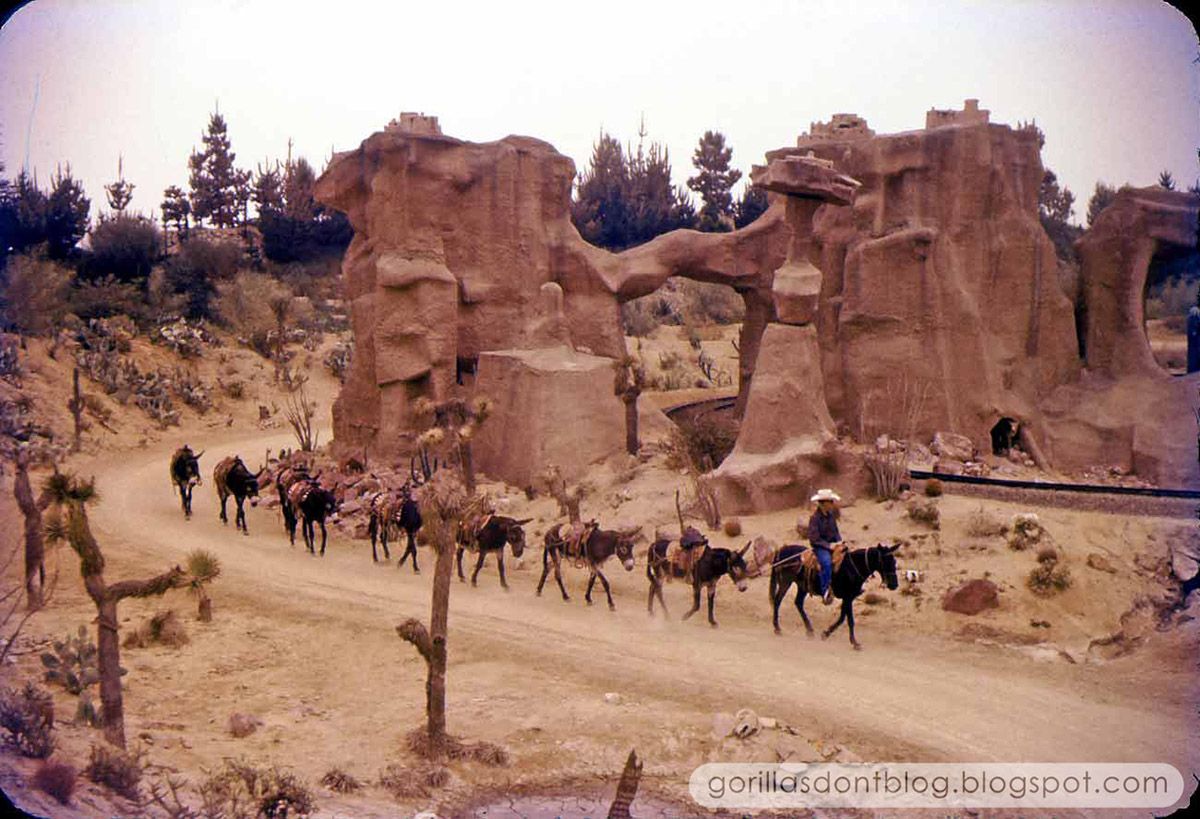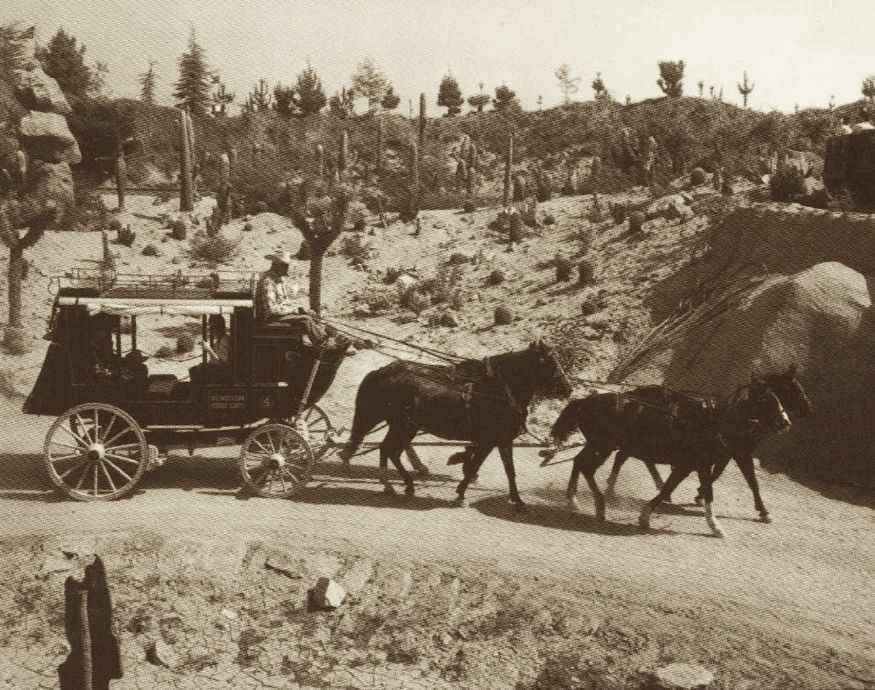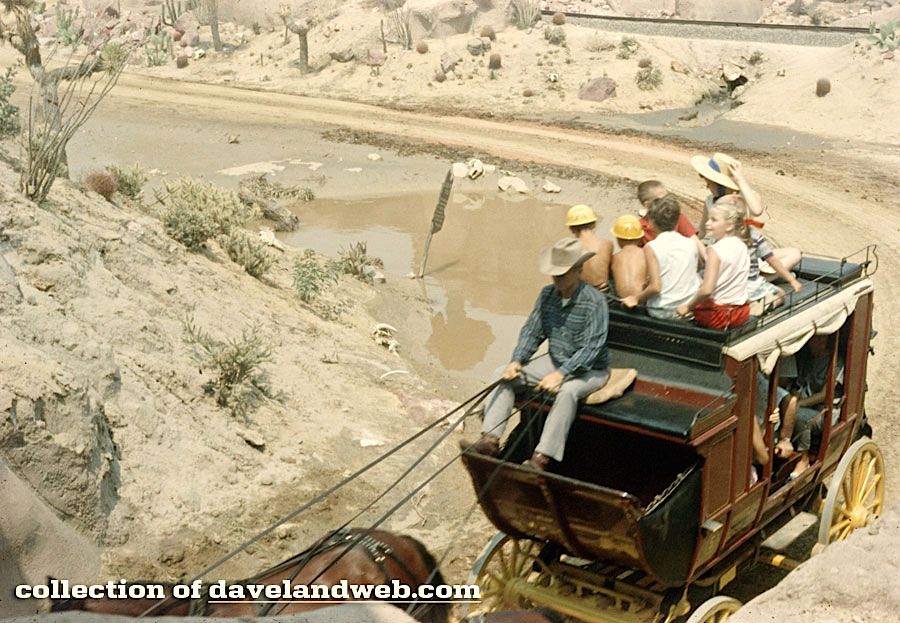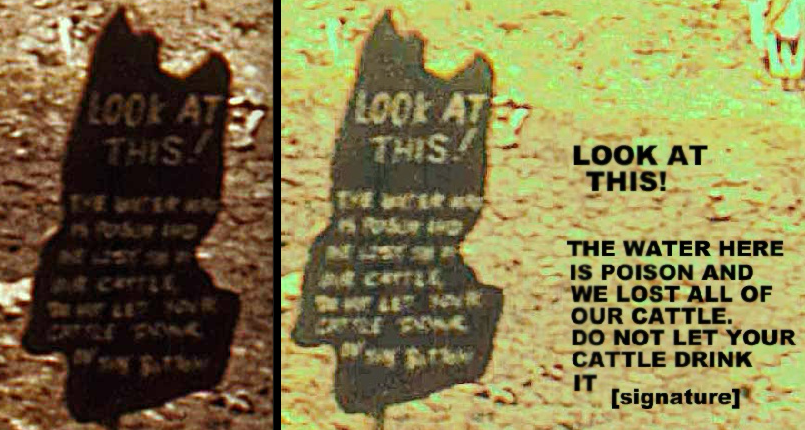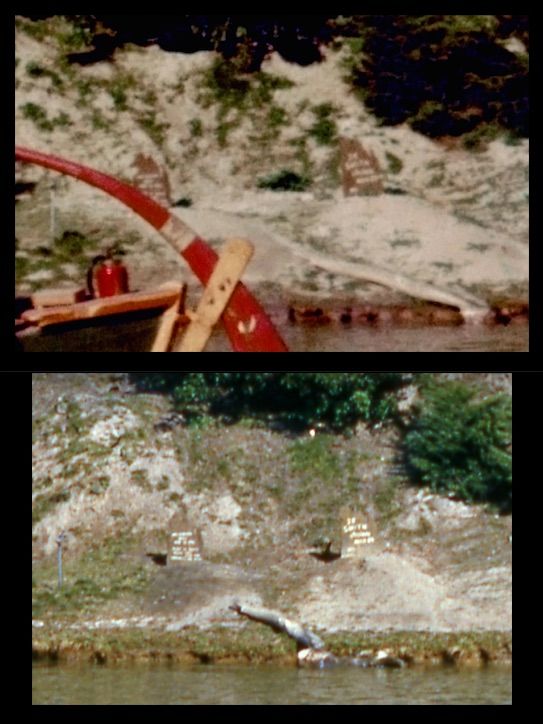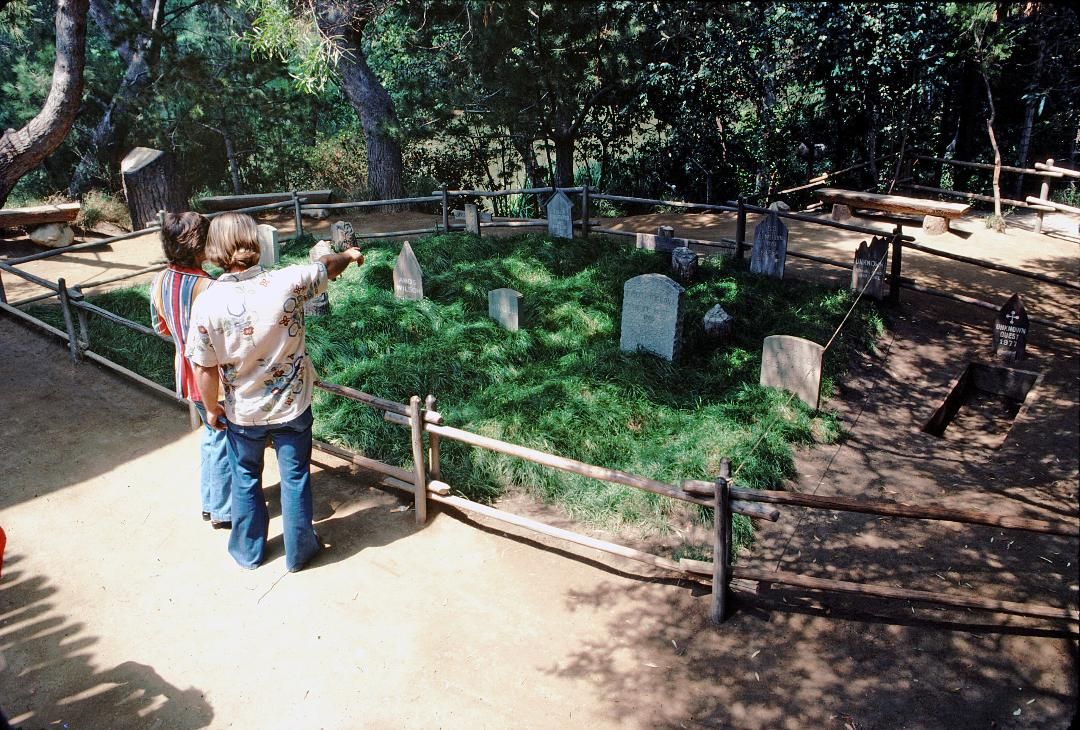I've done posts on all ... the ... Mansion ... graveyards (total of eight, by my calculations; but it depends on how one chooses to count them). Here at LF we've also included a well-received excursus on the three graveyards on Tom Sawyer Island. This led to a post on other long-forgotten graveyards in the park, like the one on Rainbow Ridge and a special one-off at the Mansion in 2000.
There are two more boneyards that I have promised at one time or another to cover someday, and I guess that day is today. Even though it may seriously be questioned whether either of these is really worth a post here, it doesn't matter. I said I'd do 'em, and by Gore, do them I shall.
And then that's it. I am aware that still other DL graveyards once existed (like the cluster of tombstones around the vulture's tree in America Sings), or still do exist (like the "boot hill" setting in the Frontierland shooting gallery), but I'm skating on thin enough ice as it is.
Alice's Churchyard
If you like the little stone church in the "Alice's Village" portion of Storybook Land, you will definitely want to check out this post by Kevin Kidney. I'll lift two pix from there to show the germinal history of the building, but I recommend you go see the rest of the photos at Kevin's blog.
Fun fact number two: The truly odd thing about this church is that it's completely gratuitous. There is no parish church building, let alone churchyard, anywhere in the Alice books or in the 1951 Disney film. True, you can see the tower of Christ Church Oxford in the distance in the opening scene, but that's hardly the same thing, and no one in the story makes any reference to it. Someone at Disney just wanted to do a typical English parish church, period, and "Alice's Village" provided the necessary excuse for making one and placing it in Storybook Land.
Three cheers to that someone. I must confess to a strong weakness [sic] for English churches, so it's no surprise that this is my favorite building in Storybook Land. I've got several books on English church architecture, as a matter of fact, with heavy emphasis on the humble but often very ancient parish church.
Something I find quaint and curious is that in addition to the fact that these old churches always have graveyards beside them, on occasion the churches themselves function like grave markers. There are about 3000 lost villages in the British Isles, hamlets and towns no longer extant, wiped out by the plague in many cases, and after all these centuries it is sometimes the case that the village can only be located because the ruins of its church are still there. Being the only stone building in the village, it survived while everything else gradually disappeared.
But I digress. Back to Alice. Like any ancient parish church, Alice's includes a churchyard. Since it's still there, this lilliputian cemetery isn't so much long forgotten as easily forgotten. It's charming, but beyond that, what is there to say? Well, there is one thing I've noticed, and I suppose this will have to qualify as fun fact number three: Unlike other Disneyland graveyards, whenever they do some gardening/landscaping/painting/ that entails uprooting the tombstones, they put them back any old way they please. Little attempt is made to keep the markers in any particular spots or to replicate the old design when a new one is made. A simple photo survey shows this clearly enough (as if we needed an excuse!).
and there are already noticeable differences between the two layouts.
In the early history of the first pet cemetery at the Haunted Mansion (on the north side), we saw some degree of carelessness with regard to the placement of the animal markers, but nothing like the cavalier attitude we see here. You will recall that when someone treated the Fort Wilderness cemetery in this way, a subsequent Imagineer put the grave markers back where they belonged, indignantly, one supposes.
A Mansion Tribute? Little Chance, Very Little
You rarely find direct photos of it. Usually, you only see it in the corner of a picture of something else! It seems that most of the time it was dry, but it was always recognizable by the warning sign in the middle of it and the cattle bones around it.

